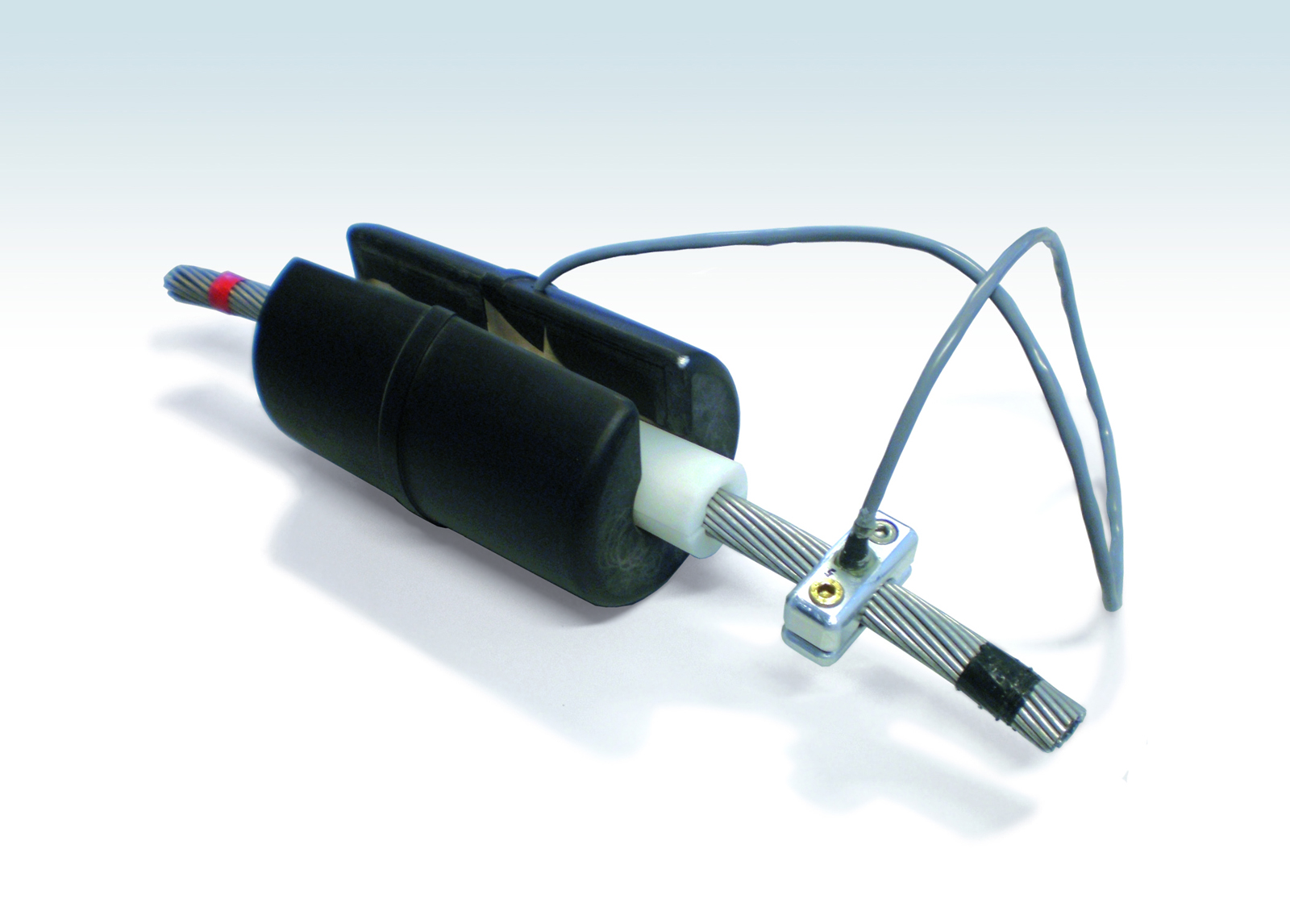Finding reserves on the electrical grid
The weather determines how much energy wind turbine systems provide. The same applies to power line capacity. On cold and stormy days, this capacity is higher than on days with no wind and high mid-summer temperatures. An autonomously powered sensor network monitors power lines to find the reserves in the lines.
When storms lash northern and eastern Germany, it regularly gets tight in the high-voltage and highest-voltage electrical grids. Electricity from renewable resources has priority on the grid. But, on stormy days in particular, wind turbine systems must be taken offline, because the gird capacities are insufficient. “Currently we are in a situation where we have high inflows from renewable energies into our high voltage line system and are expecting large increases in the future. However, the grid is not designed for this level of energy feed,” reports Hanjo During of envia Verteilnetz GmbH in Halle, Germany, Additional power lines are being planned. But the authorization processes could take years and very often fail due to the resistance of the people living near the projected path of the lines.
For this reason, the grid operators are already utilizing various line-monitoring procedures to increase the grid capacity over the short term: They utilize reserves that are the result of a standardized assumption regarding the worst weather conditions for operating the line and the actual state of the line. In favorable weather conditions, they were therefore able to increase the transmission capacities by 20 percent or more. Currently, Amprion and envia Verteilnetz are testing a new type of autonomously powered sensor network to monitor 110 kV and 380 kV lines. It is being developed jointly with the Fraunhofer Institutes for Reliability and Microintegration IZM in Berlin and Electronic Nanosystems ENAS in Chemnitz, Germany as well as other research and industrial partners in the “ASTROSE” project. “Our autonomously powered sensor network can be retrofitted easily and does not require additional infrastructure,” says Dr. -Ing. Volker Großer from the IZM. In contrast to the current monitoring systems it supplies measurement data from a tight-knit sensor network directly attached to the conductor wires.
How much current can be transmitted by a power line depends very much on temperature. If the conductor wires heat up as a result of flowing current or the sun, they expand and sag. If the sagging conductor wire gets too close to the ground, buildings, vehicles or humans, there is a risk of electrocution. To rule this out, prescribed safety clearances are mandatory. At the same time, the permitted current flow is calculated under the assumption that the ambient temperature is 35 °C and that the wind’s velocity will not exceed 0.6 m/s. However, high midsummer temperatures often bring with them a lull in the wind. Most wind turbine systems will only start to operate once wind velocity has reached 3 m/s. They deliver high amounts of electricity during fall and in winter when the power lines are effectively cooled by the weather.
To better utilize these reserves in the grid without compromising safety, the ASTROSE project partners equip the 110 kV and 380 kV lines with „eGrains.“ Cylindrical sensor nodes are wrapped around the conductor wire approximately every 500 meters. „They consist of two half cups that are clamped on and attached to each other. The ASTROSE-eGrains measure the cable‘s angle of inclination, the current flow, the temperature as well as wind movement. All measurement values are relayed from eGrain to eGrain to the next transformer station and there they are fed into the central monitoring and control system or rather made available to the internet-based remote maintenance systems of the grid operators,“ explains Großer. The ASTROSE eGrains pull the energy they require from the electrical field that surrounds the conductor wires. However, the ASTROSE sensor network does not only help utilize the capacities of the power lines better. It also reports dangerous line sags, such as can occur in winter as a result of ice build-up on the lines. The sensor node can be seen at the „Sensor + Test“ tradeshow from June 7 – 9 in Nuremberg, Germany, in Hall 12, Booth 231.
